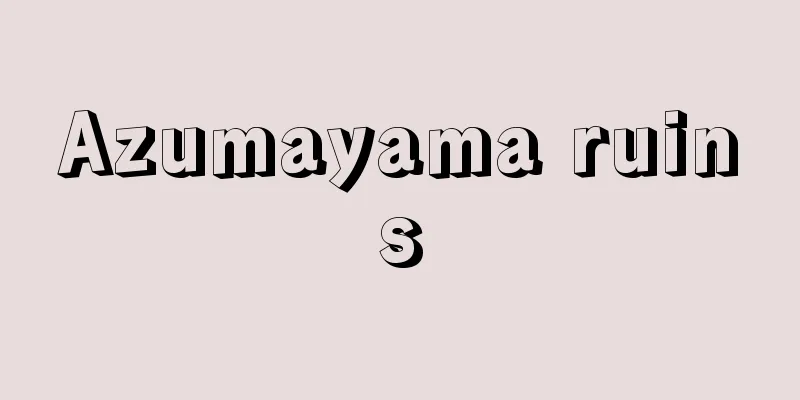Karaito Kasuri - Karaito Kasuri

|
...It began in 1853 (Kaei 6) when Tomita Kyusaburo wove Igeta Kasuri, which is dye-resistant with bamboo bark wrapping. It has been called Bunkyu Kasuri, Karaito Kasuri, Aruji Kasuri, Tanzako Kasuri, etc., but in the early Meiji period it came to be called Bingo Kasuri. E-kasuri was also produced using the techniques of Kurume Kasuri on a plain woven navy blue background. ... *Some of the terminology that refers to "Karaito Kasuri" is listed below. Source | Heibonsha World Encyclopedia 2nd Edition | Information |
|
…1853年(嘉永6)富田久三郎が竹の皮巻で防染する井桁絣を織ったことに始まる。文久絣,唐糸絣,有地(あるじ)絣,谷迫(たんざこ)絣などと呼ばれてきたが,明治初年に備後絣と称するようになった。平織の紺地で久留米絣の技法をとり入れ絵絣もつくられる。… ※「唐糸絣」について言及している用語解説の一部を掲載しています。 出典|株式会社平凡社世界大百科事典 第2版について | 情報 |
Recommend
Great orange tip butterfly
This butterfly belongs to the family Pieridae of ...
Akutoke
…Until around 1955, Akita Prefecture had a type o...
Hijikata clan
A feudal lord of the early modern period. They wer...
Umebachimo (Plum blossom algae) - Umebachimo
…It grows in shallow streams and sometimes in pon...
Ozehoan - Ozehoan
A Confucian scholar and physician from the Azuchi...
Stegolophodon (English spelling)
A small fossil elephant of the Pentalophodontidae ...
Dawks's Letter
For example, in England from the Restoration to t...
Flewelling, RT (English spelling) FlewellingRT
…The task of the 20th century personalist movemen...
curdsoap
...After the reaction is complete, the reaction p...
Cardiopulmonary ratio - shinpaikeisuu (English spelling) cardiopulmonary ratio
The Schneider test is a test that measures the hea...
Ganapati (personal name) - Ganapati
...Initially subordinate to the Chalukya dynasty,...
Belcari, F.
…In the 15th century, writers who wrote religious...
Shih Tzu (English spelling)
…In Tibet, it was believed to be a talisman that ...
Ji-jiu-pian (English: Quick-return section)
This is a textbook on characters said to have been...
Camera Eye
...This work uses experimental modernist techniqu...









